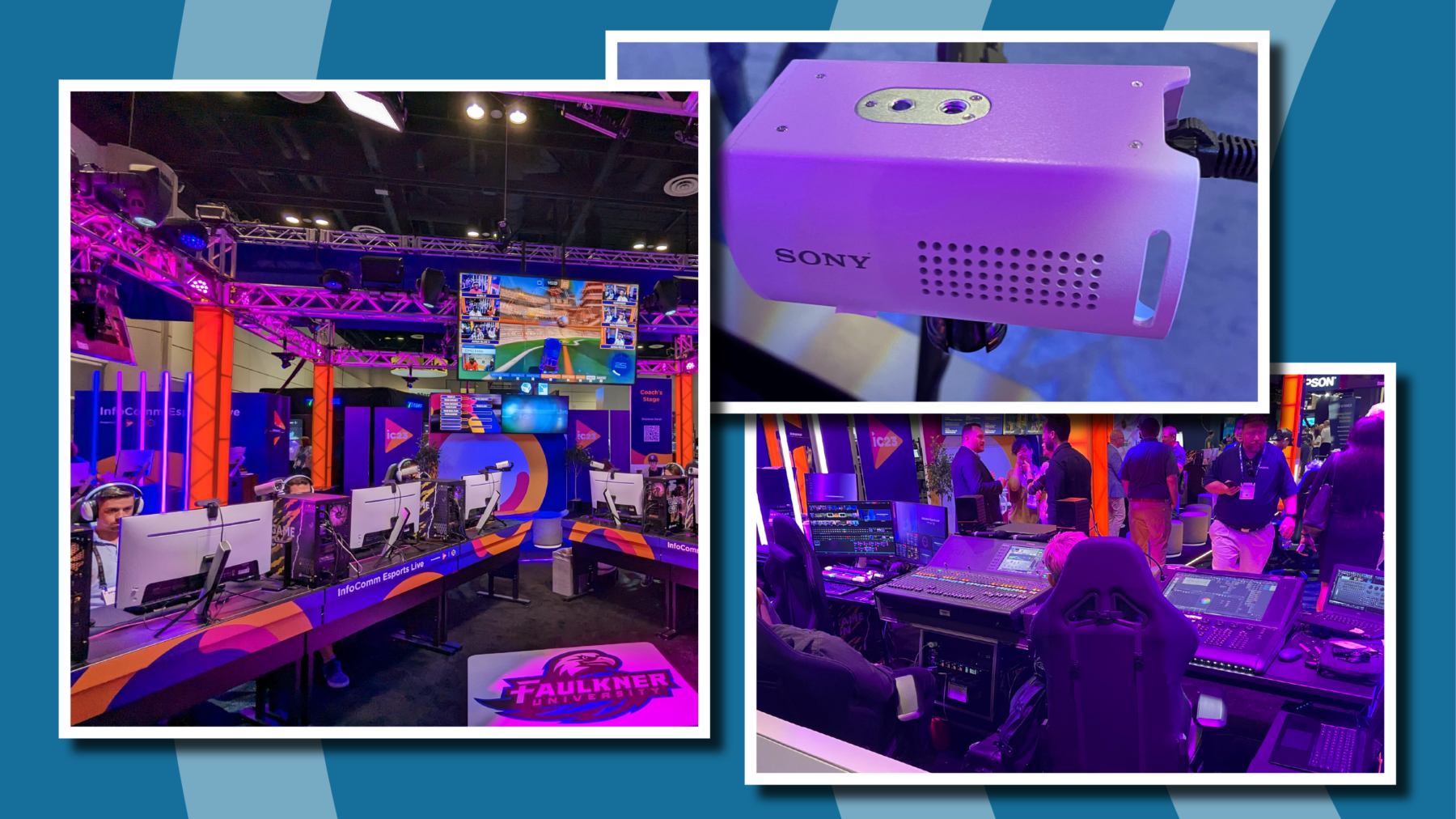AV Systems Design: The Core of Every Collegiate Esports Facility

Since the early days of video games, gamers have been competing head-to-head to test each other’s skills. What has changed over the years, however, is how and where people play video games. In the late ’70s and early ’80s, gamers would go to video arcades to play games on shared coin-operated systems like Pong (1972) and Joust (1982). With the rise of home video game consoles in the ‘90s like the Nintendo 64, Sega Genesis, and the Sony PlayStation, gamers were able to bring competitive video gaming to their home screen. Classic multi-player games of the era include GoldenEye 007 (1997), Street Fighter II (1991), and Twisted Metal (1995).
As the cost of video game consoles and personal computers decreased and the technology advanced, gamers were able to compete on their personal computers or consoles and monitors instead of sharing a system and splitting the screen. Systems were able to connect to a local area network (LAN) and create LAN Parties. Unsurprisingly, those LAN Parties would eventually evolve into online gameplay. While the Sega Dreamcast was the first video game console to support online play, Microsoft with its Xbox Live service was able to bring online gaming into the mainstream with the iconic game Halo 2 (2004).
Today, competitive gaming has evolved into a multi-billion-dollar industry known as Esports. While the majority of gamers still play recreationally at home, those who wish to compete at a higher level typically train and compete at a dedicated facility. Similar to traditional professional and collegiate sports like football and basketball, Esports programs need a space to train, compete, and a way to share their experience.
Along with the growing number of Esports clubs, colleges and universities are additionally using these facilities as a means to promote student engagement and interaction. Throughout several Esports projects at various universities and colleges, Acentech’s Technology Group has seen requests for the following spaces (not just from the owners but from the student gamers themselves): Gaming Stations, Competitive Gaming Arenas, Team Rooms, Broadcast Rooms, and more. Each of these spaces requires an integrated audiovisual system to share gaming feeds or to review and playback previous games.
The typical Gaming Station space is dedicated to a high volume of gaming computers allowing students to play together. These PCs and consoles may not be used for competition or broadcast, but the space still acts as a gathering space for students to compete or play together recreationally. Large stand-alone video monitors are installed in these spaces to playback any video feed from the Broadcast rooms as well as local video connections.
At the highest level, the competitive Gaming Arena is the focus of the Esports facility. Like a football stadium or basketball arena, this is where spectators come to watch gamers compete. Typical audiovisual requirements for the arena include high-end gaming stations, a gamer headshot camera, and large format video displays such as a direct view LED wall or projection system for spectators to view gaming feeds, game stats, and player reactions.
Esports facilities often have Team Rooms where gamers can go to review their gameplay. These spaces operate similarly to meeting rooms, where gamers and coaches can gather and review game footage. One option we have seen included in these spaces is the installation of surround sound since a lot of games are dependent on audible cues as much as visual ones.
To share the gaming content and promote the Esports group, there is typically an associated Broadcast Room as part of the facility. The Broadcast Room is used for live video production streaming and post-production editing. It typically includes a commentator station to provide live commentary during the games, a green screen to create promotional materials, and a production station with an audio console to manage live video and audio feeds from the gaming computers, live player headshots, a replay system, and any pre-generated video content.
The audiovisual industry is working alongside the Esports community to share our expertise in broadcasting and distributing audio and video content within Esports facilities. For example, during this year’s InfoComm trade show, there was an exhibit dedicated to the Esports community showcasing integrated audiovisual equipment. The exhibit was configured as a mock Esport facility, incorporating the majority of the features and capabilities described above. As you walked up to the booth, a giant video monitor was used as a main “Arena” video board. The video board had live game footage (Rocket League) and a video feed of each competitor. Each team had three players, each with their own gaming station and reaction camera. Behind the gaming station was a broadcasting booth with two commentator stations. During the game, the commentator’s audio feed was broadcast throughout the Esports Booth which was mixed along with the audio feed by an audio engineer at the side of the booth.
Esports is a growing industry and colleges and universities have been utilizing Esports programs on campus for recruitment and to promote student engagement. Outside of gaming and social connectivity, students are able to utilize and practice what they have learned in Esports programs, including post-production media editing, live broadcasting, and configuration of the hardware systems. Soft skills include marketing the program, business development with manufacturers and professional organizations, and event production. With the Esports industry influencing Hollywood productions and drawing large crowds to major league competitions in arenas like Madison Square Garden and the HyperX Arena, it will be interesting to see how audiovisual technology evolves to keep pace.
If you have any questions on how an integrated audiovisual system fits within your next Esports facility, please reach out!